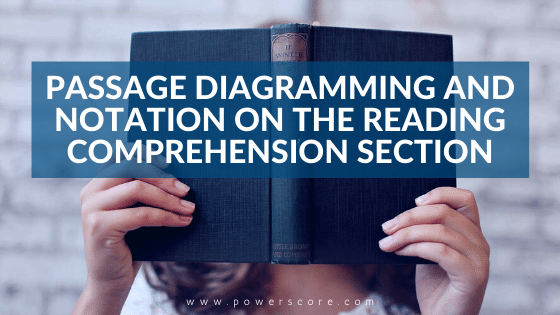Diagramming and notation can play a vital role in a strong performance on the Reading Comprehension section of the LSAT. The ideal approach to effectively breaking down the passages, however, can be different for each student. Unlike Logic Games, when it comes to Reading Comprehension passages there is no single best way to diagram or notate. There are, however, several diagramming options from which to choose.
Basic Underlining
This is the simplest, most common technique. You underline important words or phrases that provide vital information, or point to a turning point in the passage. When you take this approach, keep in mind that moderation is key. Some underlining can be very helpful, but too much underlining can be less effective, or even worse, potentially confusing.
Circling
Some students prefer to circle key words or phrases. Even if you use underlining as well, circling can provide a visual distinction and make important elements of the passage stand out more clearly.
Boxing
Boxing is a simple variation on circling, though in the marking system that we discuss in the PowerScore LSAT Reading Comprehension Bible, we reserve boxes for the identification of viewpoints and to underscore shifts in viewpoint within the passage.
Bracketing Text
This technique is best for marking a section of text that is too large for underlining. Often a bracket in the margin along with a quick note about the corresponding lines of the passage can be far more effective (and sometimes less time consuming) than taking the time to underline five or six full lines.
What to Use to Diagram
You have two choices for highlighting instruments. LSAC allows the use of both a pencil and a highlighter, though we generally prefer the pencil, in part because it allows you to quickly make side notes as you mark the passage. The choice is yours, but be aware that if you choose to use a highlighter you will still likely find yourself reaching for your pencil frequently.
Keep in mind that when it comes to diagramming, practice can help to perfect. By taking practice sections (or even just doing individual practice passages), you can quickly increase your familiarity with the kind of language they use on the test and the sorts of questions that you are likely to encounter. Beyond that, you can use your test reviews to hone your summarization and notation skills, and to help determine the diagramming approach that will be most effective for you.
Experiment and Review
This is a step that probably doesn’t occur to most students, but as you review your Reading Comprehension results, don’t forget to review your diagrams and notations! As you look over all of the questions (the ones that you missed and the ones you got right), also consider your passage notations. Could you have done a better job? Did you over-notate in some cases, perhaps fail to underscore something vital in others? Great! Go back and fix or improve your notations with the right answers in front of you. Bring the lessons you’ve learned to the next passage you attack.
So, to determine your optimal approach to diagramming, do a bit of experimentation: In the Reading Comprehension Bible we provide various examples to illustrate some of your options, from underlining to bracketing, and from minimal to heavy notations. Try out different levels of notation and diagramming to see what approach works best for you!


Leave a Reply